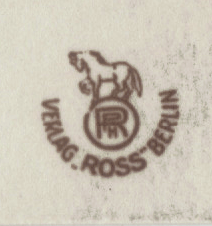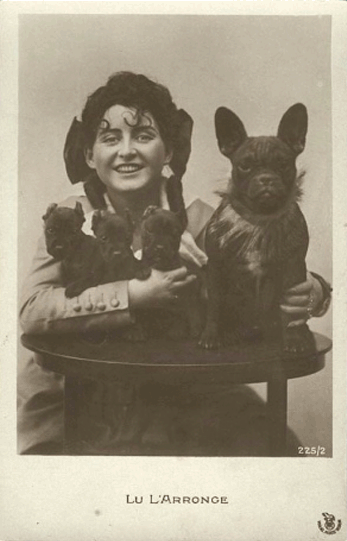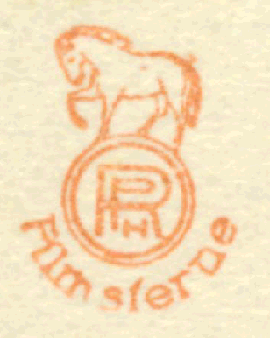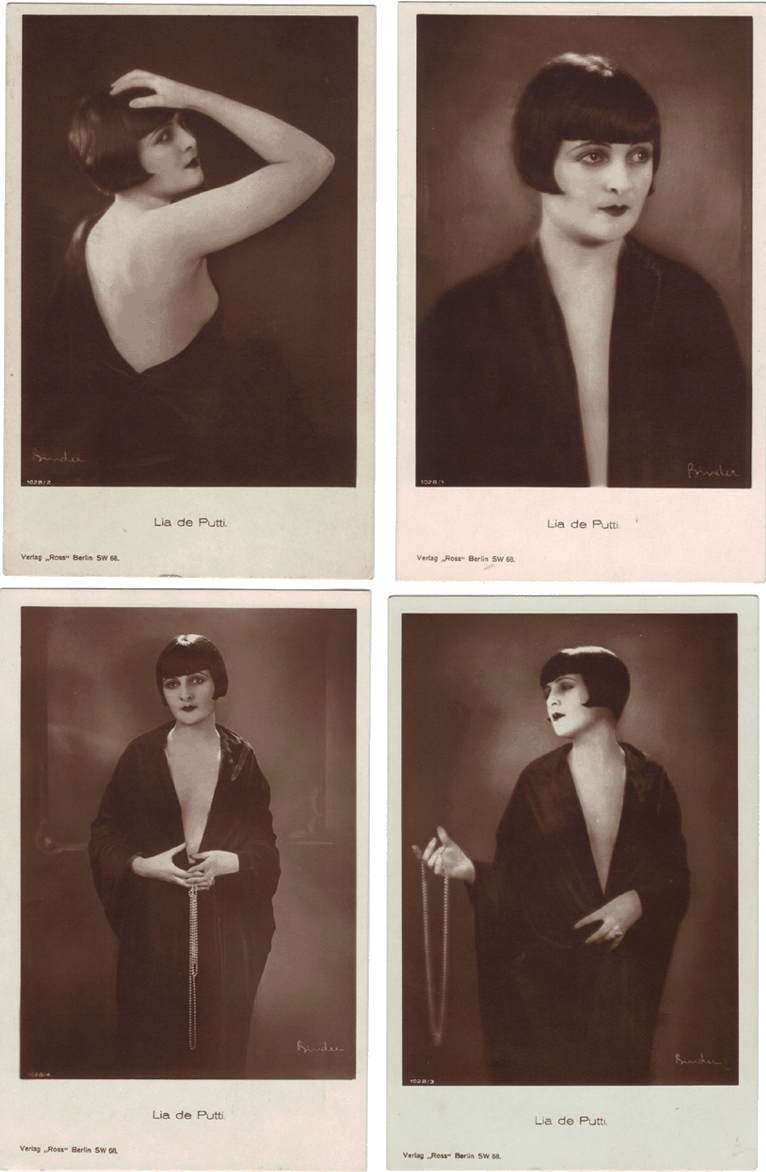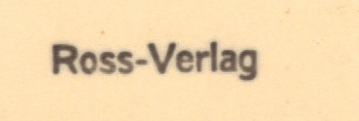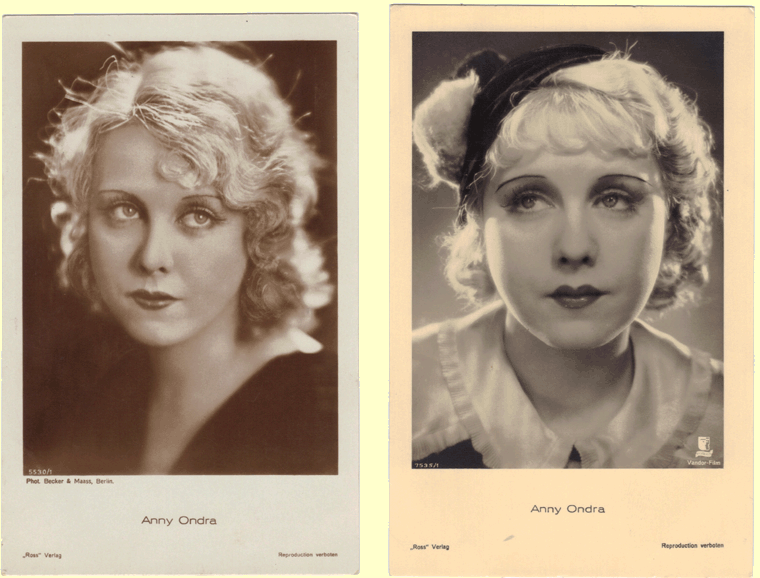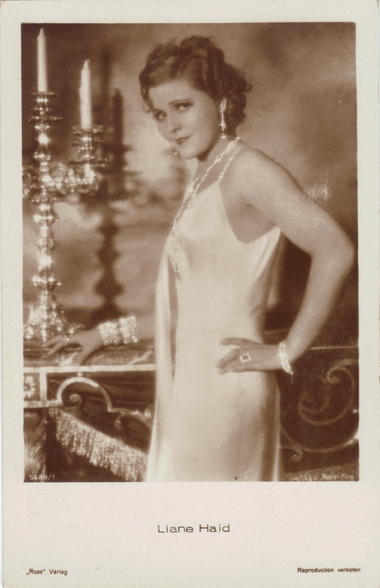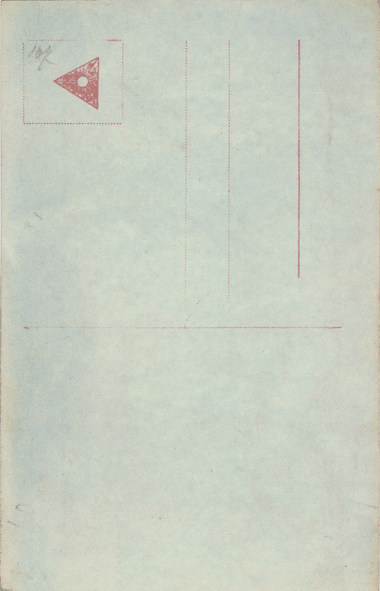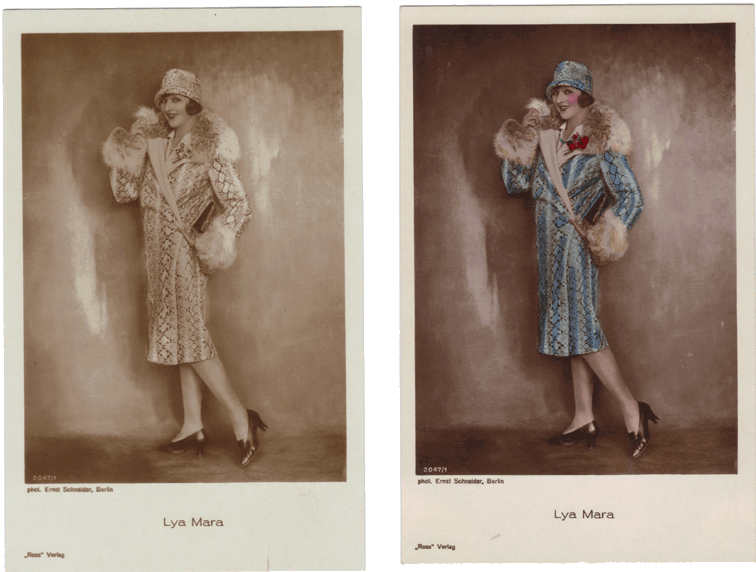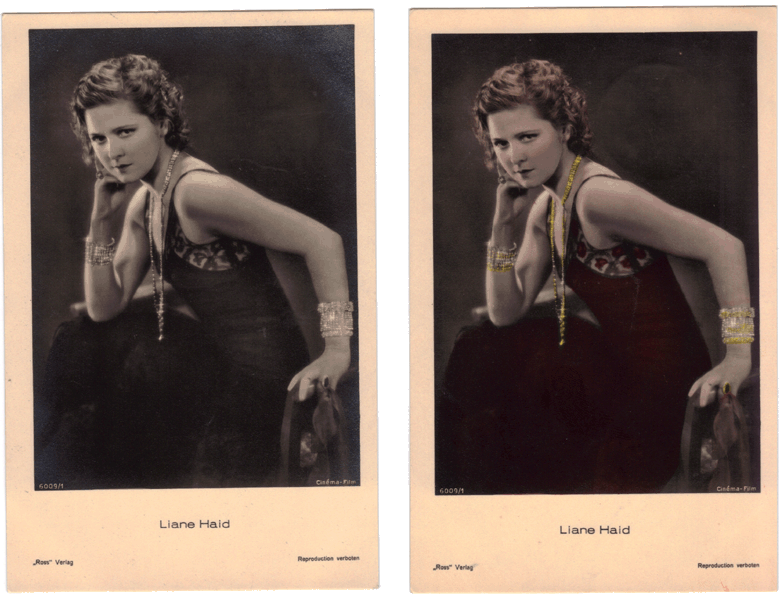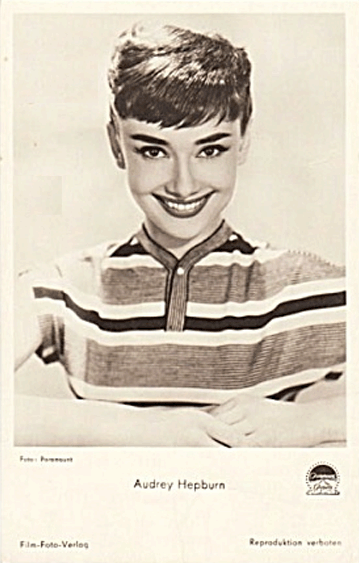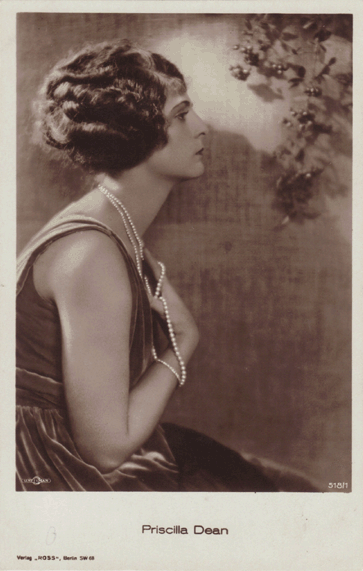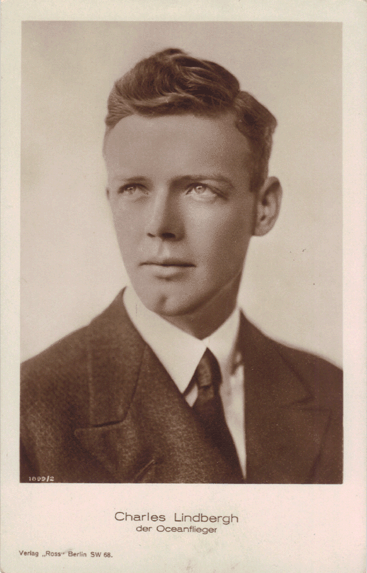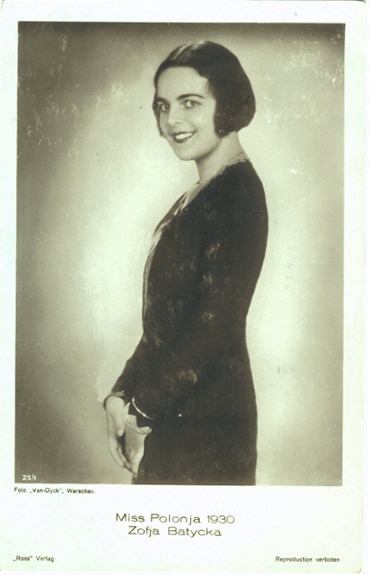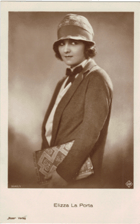Ross Verlag was a Jewish run business. When Adolf Hitler and the National Socialist Party (the Nazis) came into power, the goverment began its persecution of Jewish citizens. Soon, Jews were forced out of business by the Nazi's, and their companies taken over by non-Jews. Heinrich Ross, the founder of Ross Verlag, suffered the same fate, but was fortunate enough, at least, to eventually escape to America. Postcards of known Jewish performers were no longer advertised for sale, although they were still being sold.
Around 1937, the Ross Verlag firm was apparently a subsidiary of a film company known as Tobis Filmkunst G.m.b.H. Although there is a Tobis Filmkunst G.m.b.H in existence in Germany today, it has no connection to the original Tobis. The foundation that handles the archives of the original Tobis has no information on Ross Verlag. They believe that most of the records were probably lost in the war.
During WWII, all film companies in Germany were owned by the government, so more than likely Ross Verlag also came under Nazi control. The Ross Verlag name does appear on propaganda postcards related to the war effort. It is surprising that they retained the Jewish owner's name for several years, but that probably had to do with their not wanting to lose the contracts they held with the studios for reproduction rights of the images. Also, they would not have wanted to renegoiate their distribution contracts through out the world. They changed to Film Foto Verlag after the USA entered the war in 1941.
The propaganda postcards were published as an "R" series, with over 300 cards. For a more indepth history of these cards, check out this fascinating website: www.filmfotoverlag.com
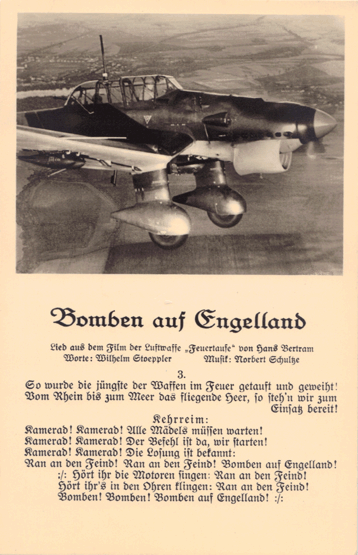 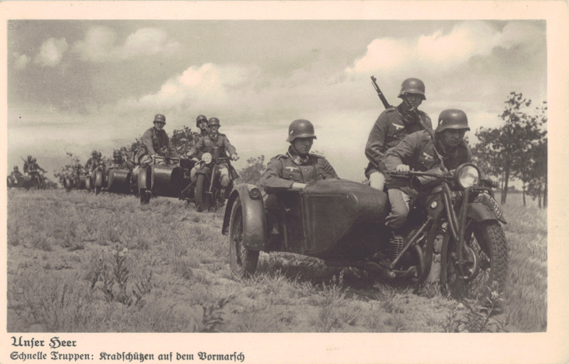
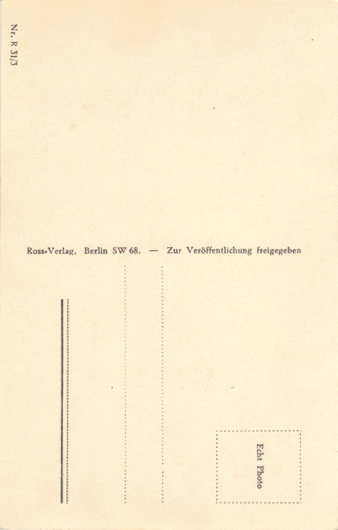 
 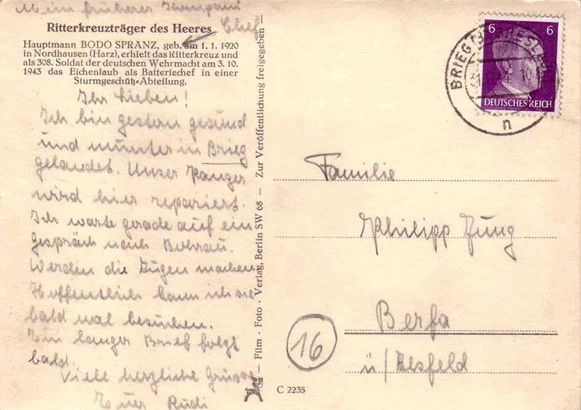
Front and back of some WWII military propaganda Ross Verlag R series postcards
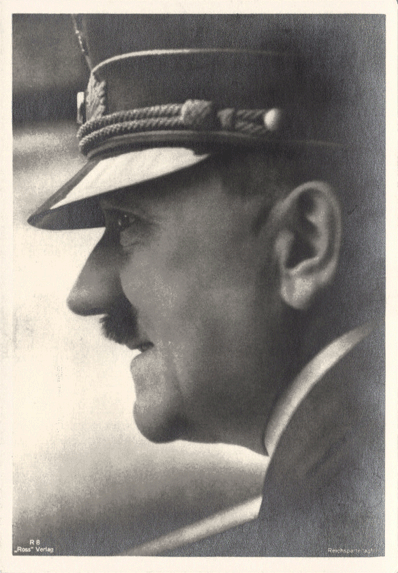 
Adolf Hitler appeared on some of the postcards. Ironically, when Hitler was pursuing his art career before his political ambition, he reportedly hand painted postcards to sell.

Although the children of Royalty and film stars had often been portrayed on postcards, it seems really creepy to see the child of a infamous Nazi leader pictured the same way. Postcard of Hermann Goerings daughter, Edda, probably sometime around 1939-40. Goering was the second in command to Hitler. Hitler was also Edda's godfather. Photographed by Rosemarie Clausen, famous German photographer. Edda is reportedly still alive.
|
